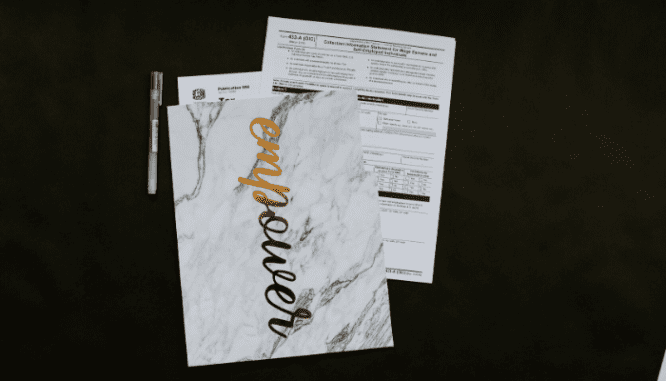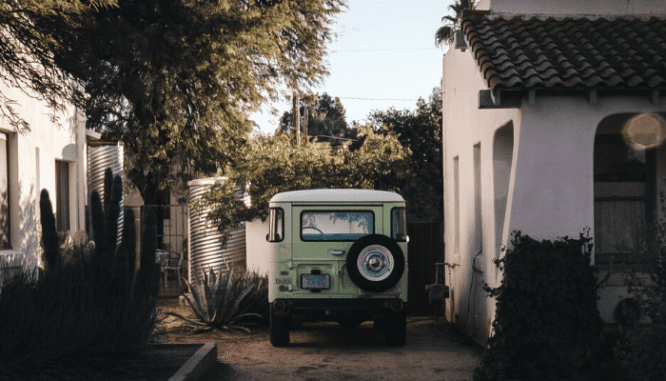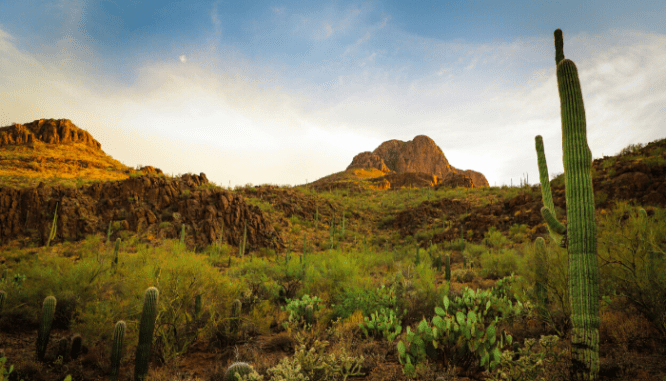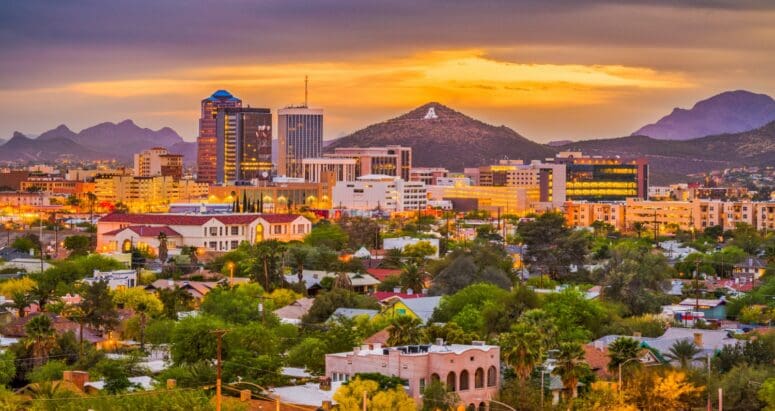How to Buy a House in Tucson: Everything You Need to Know
- Published on
- 6 min read
-
 Eric Bates Contributing AuthorClose
Eric Bates Contributing AuthorClose Eric Bates Contributing Author
Eric Bates Contributing AuthorEric Bates is an editor and writer with more than a decade of experience covering culture and lifestyles. He lives in Los Angeles.
With a relatively low cost of living compared to both the rest of the state and the nation, and temperatures that rarely dip below 40 degrees, Tucson, Arizona, has much to draw homebuyers. With populations surging throughout the Southwest, however, you won’t be the only one looking. If you’re ready to land your Tucson dream home, there’s no better way to clear the path than harnessing information from the people who know the city best.
An hour’s drive from the Mexican border crossing in Nogales, the Sonoran desert city follows a historic grid plan at its center, with a diverse array of subdivisions emanating outward within a basin ringed by five mountain ranges, accommodating landscapes and lifestyles that satisfy a range of different tastes.
It’s no surprise, then, that the city’s real estate sector is hotter than ever, with inventory hitting historic lows in November 2019. Listings are yielding “multiple offers within the first couple of days of the house being on the market,” says Tierra Antigua Realty’s Steven Wendling, a top agent in the city who has 38 years of real estate experience. “First-time homebuyers right now really have a lot of challenges.”
Such stiff competition makes it more important than ever for prospective buyers to do their research before looking at homes. To get the inside scoop, we spoke with Wendling, as well as Julia Gallardo, a certified professional at Petrichor Home Inspections, and combed through the data. You’ll learn the tricks necessary to get an edge over other interested parties, where to look for deals, and common problems to look out for prior to inspection.

How far will your budget take you in Tucson?
Home prices in the Old Pueblo have been rising steadily since 2013, with the median cost hitting $226,000 in November 2019, just above the national average during the same period. The average mortgage payment of $948.57 runs a little more than the median rent of $772 per month.
“If you’re moving from California, it looks very affordable. If you’re moving from the Midwest, it looks expensive,” Wendling says, pointing to Florida as a comparable market. But given high demand and a construction industry still playing catch-up after the post-crash slowdown, costs can be expected to continue to climb.
Start with HomeLight’s home affordability calculator
The first step, of course, is determining your budget. Consult HomeLight’s handy Affordability Calculator to get a feel for how far your money will take you in Arizona’s second-largest city: just fill in the relevant financial information, enter “Tucson, AZ” in the top search field, and let the calculator take care of the rest. The results will not only give you a lay of the land but also prepare you for conversations with your lender.
Always pre-qualify
This kind of advance prep work will be key in Tucson, where the tight market makes pre-qualification more important than ever. Wendling stresses it early in his conversations with clients.
“I just try to coach my buyers into focusing on what their needs are,” he explains — “not necessarily what their desires are because you’re not going to find the perfect house.” Once their needs have been clarified, the immediate next step is getting pre-qualified, so they don’t waste a second longer after they find a home that fits the bill.
The challenges presented by low inventory are particularly acute for first-time buyers with a budget in the $200,000 to $300,000 range. While Tucson’s median sales price falls squarely within this bracket, this is the price tier in which brokers are seeing the highest levels of activity.
For those looking to purchase a second home, or anyone working with a budget in excess of $500,000, the situation is less of a feeding frenzy. Even here, though, interested parties must act quickly. “Homes aren’t staying on the market for more than a week,” says Gallardo.
Distinguish your offer from the rest
Once you’ve found a home you love within your budget, Wendling suggests a few tactics to distinguish yourself from the other buyers who will inevitably be nipping at your heels.
“We try to structure the offer in a way that will tilt it in your favor,” the agent says. “That might be by using a higher earnest money deposit, or good faith money.” Such an approach leaves little room for negotiation when seeking a deal, which Gallardo says has frustrated many of those attempting to get under contract.
Wendling cautions against making a lower offer to test the waters. “With a first-time homebuyer, their first offer has to be their best offer.”

What kind of homes you’ll find in Tucson
The style and quality of housing stock in Tucson varies across the city’s many neighborhoods and suburbs. Many of the older homes currently hitting the market again were constructed between the 1970s and 1990s. Gallard reports a high number of brick buildings and slump block homes, particularly for units erected in the 1970s.
More recent construction has tended to favor wood-frame stucco. The city also contains a fair share of classic Southwest adobes. “They’re gorgeous from the outside,” Gallardo says, “but the rainwater just washes away the adobe, so you can see a lot of damage, unfortunately.”
Consider a new build
Construction rates dropped in 2009 but have picked up again in recent years, leading many first-time buyers to opt for new homes in freshly constructed subdivisions. The popularity of new builds is not simply a matter of supply, either. These developments also offer greater leeway for planners to respond to market conditions.
For example, Bob Bambauer, executive vice president of Sunbelt Holdings, which finances such master-planned communities, cites the affordability of “smaller lots that have infrastructure, allowing for faster builder turnaround,” concluding that “communities where home prices are in the mid-$200,000 range are selling best, and homebuilders are on the hunt for smaller lot sizes to stay competitive.” These particular conditions can be expected to change since December 2019, but this kind of planning will continue to allow for quicker, more flexible response.
Even in just-erected neighborhoods, location is everything. While a Main Street address might seem desirable, these primary thoroughfares are best avoided by those sensitive to noise or anyone looking to escape the worst traffic congestion.
Seasoned Arizonans also know that the orientation of the backyard is a crucial factor. The punishing Southwest sun is most disruptive to those with a yard or patio that faces west, directly receiving the strongest rays in the evening hours when you might want to play with the kids or enjoy a beer on the porch.
A qualified agent is essential for newly constructed units. A real estate agent who knows what to look for can also help you take advantage of incentives, including significant discounts, that a new-construction the site rep wouldn’t necessarily mention. They can also provide crucial assistance in negotiating upgrades and determining the fair price for a lot premium. Best of all, in this scenario, their representation comes free of charge, since the costs will be shouldered by the builder
What to look out for before inspection
The omnipresence of the desert sun is also a consideration for those looking at resales, especially during the inspection phase. It “does take a huge toll on all of the exteriors,” inspector Gallardo notes, “the wood, the roofing; especially for south-facing homes. The south side always gets it the worst.”
If you’re considering an older unit, another major local consideration is plumbing. Many Tucson homes constructed in the boom years between 1978 and 1995 were fitted with polybutylene piping. “It’s a big issue here because of how much calcium is in our water,” Gallardo says. “It just deteriorates the pipes so much.” Widespread complaints about the piping’s defects lead to a class-action settlement, but since the lawsuit’s time frame has run out, there’s no longer money available for replacement, making it a major point of bargaining between buyers and sellers when homes still contain it.
As for other inspection issues, a favorite local cliché goes: “If you don’t have termites, you will.” But Gallardo stresses widespread misconceptions: “There are two different kinds of infestation: the kind where you can do spot treatments and the kind you have to tent for. And a lot of times we see the mud tubes that you can spot-treat.” So while you’ll want to ask whether any of these insects are poised to threaten the integrity of your family’s new dwelling, the remedy may be less involved — and less expensive! — than you imagine.
Scorpions are another common pest in the area, but their presence on a property must be included on a disclosure statement. If you’re considering a more remote location further from the city center, don’t fail to consider the presence of other common desert fauna. Wendling notes that his own desert property sees its share of coyotes, bobcats, and javelinas, a wild hog that can do a lot of damage if left to its own devices.
A final note on resales: while the effort to shorten the inspection window is not a frequent gambit for closing a deal, Gallardo says she gets a lot of pressure to perform the standard inspection as quickly as possible because buyers are often hoping to execute additional specialized inspections. “A lot of people want to do a roof inspection, and a sewer scoping, and termite inspections, and all kinds of inspections on top of a regular home inspection.”
Choose the right neighborhood or suburb for your budget
While Tucson’s downtown has seen a concerted redevelopment effort since the turn of the century, it largely remains a business district, with a handful of rentals and condos but little available to homebuyers. Amenities, however, are distributed widely across the city, meaning most new buyers need not be too concerned about proximity to the historic core.
Many of the city’s best-known and most desirable neighborhoods are located centrally. Sam Hughes lies within walking distance of the University of Arizona, a major employer, and boasts an A+ amenities rating from AreaVibes.
A little further east is the historically designated El Encanto, ”the Beverly Hills of Tucson.” Originally developed in the 1930s, this area features lush landscaping and a range of attractive building styles. Home values here start at $500,000.
“Experienced buyers are going more toward the University for rental properties,” says Gallardo. While such headline neighborhoods will be largely out of reach for buyers at the lower and middle levels of the market, there are still some deals to be found in the city’s core. An up-and-coming inner city district like Armory Park might include something that fits your budget. Rich with classic Victorian and Queen Anne homes, it’s a quick hop from the bustling Fourth Avenue shopping district.
“To get a good buy on a home here,” Wendling asserts, “you probably need to reach out a little further from, say, downtown, or the university, or the Air Force base. You have to go a little further out where the land was cheaper to build.”
Among options in the suburbs, there’s Catalina Foothills, famed for low crime and top schools. But, the agent notes, “there are no new home developments up there. It’s all custom build homes and the houses — they’re not first-time buyer homes.”
Marana, with easy freeway access, has become a popular option in recent years. Median home values in the suburb run just north of $200,000 as of December 2019.
At the southeastern fringe of the city, there’s also Vail. It’s got stunning mountain views, and a plentiful selection of one- and two-story homes. What really draws families to the area, however, is the first-rate school district.
Among those priced out of the town itself, Gallardo has seen a lot of buyers migrating to the neighboring Rita Ranch, which is also served by the VSD. “Their education system is a lot better than in Tucson, so a lot of newer families are moving closer” in order to enroll their kids, she says.

When to buy
Tucson is a favored destination for snowbirds, who purchase a second home in this temperate climate for the winter months. Weather is also a factor in more permanent moves, Wendling says.
“We do see a lot of people relocating to the area, especially after a harsh winter on the East Coast.”
These transactions, however, still mostly occur in the months leading into summertime, when prices hit their peak, leaving January and February far and away the best months to buy.
Find a top agent
Whether you’re lucky enough to be buying a second property that will provide access to an endless summer or simply want to take advantage of the city’s growing economy, there are a lot of great reasons to make Tucson the site of your next home purchase.
Every type of buyer should talk to one of Tucson’s top agents before making any decisions. An experienced buyer’s agent in Tucson saves clients an average of $24,255 per sale and boasts sales records more than four times higher than lower-ranked competitors.
While you’ll be facing a number of other people jostling to gain access to all that the Old Pueblo has to offer — from world-class dining to the nation’s premier gem and mineral show — with these tips, and a top agent, you should be enjoying your Tucson dream home in no time.
Header Image Source: (Sean Pavone/ Shutterstock)

